The Autech Zagato Stelvio AZ1 Is an Italian-Japanese Mashup That Channels an Era
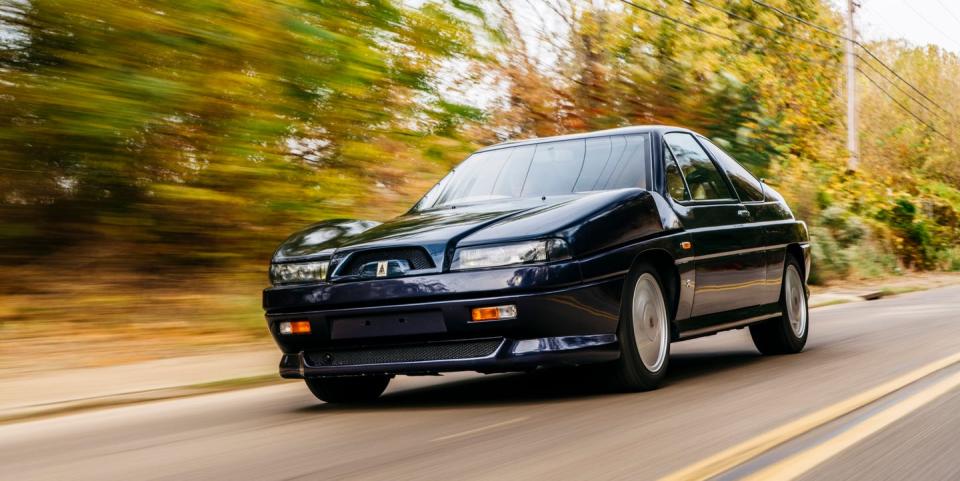
By the mid-Eighties, Japan held the second-largest economy in the world. During three decades of economic boom, Japan hosted the Olympics, launched an entire automotive industry, and gave the world icons like the Sony Walkman and Nintendo Entertainment System. Japan’s GDP soared. Banks grew heady with confidence. The world belonged to Japan’s businessmen. They, in turn, snapped up van Goghs, Rockerfeller Center, and the iconic golf course at Pebble Beach. Japan has always had the rare and unique ability to examine fading Western institutions with enthusiasm. So, in the late Eighties, when a flush-with-cash Nissan reached out to the legendary Carrozzeria Zagato of Milan, it was simply business as usual.
Rarely does a car arrive that epitomizes its entire moment in time. But the bizarre, angular, chameleon-painted ingot here does just that, channeling a rare moment of Japanese Bubble Economy zeitgeist: cost be damned, business cases be damned, good sense and convention be damned.
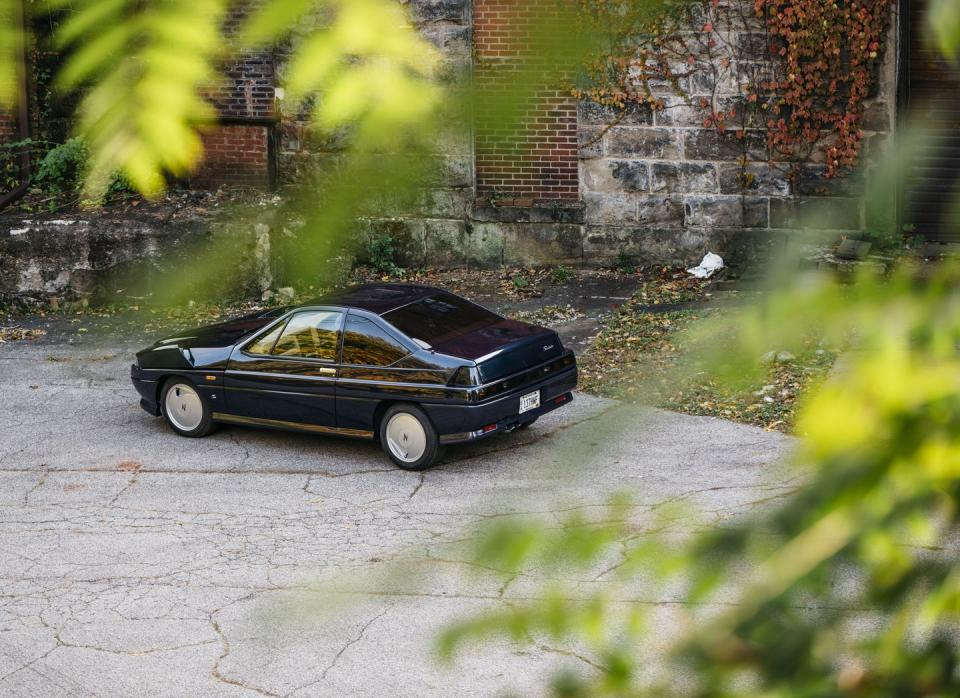
To lay groundwork for the Autech Zagato Stelvio AZ1, Nissan took a controlling interest in Zagato. In carrozzeria tradition, craftsmen hammered the Stelvio’s aluminum bodywork over wooden bucks, by hand. The massive clamshell hood is made from fiberglass. The integrated headlight lenses hide yet another set of headlights (projector units, derived from the S13-generation Silvia). The interior is a wonderland of absurdly soft Italian leather, fragile Alcantara, and genuine wood veneers. Cruise control, power everything, and electronically adjustable suspension were all standard.
When the Zagato Stelvio debuted in 1989 it cost 18 million yen, or $160,000, the equivalent of two Honda NSXs.
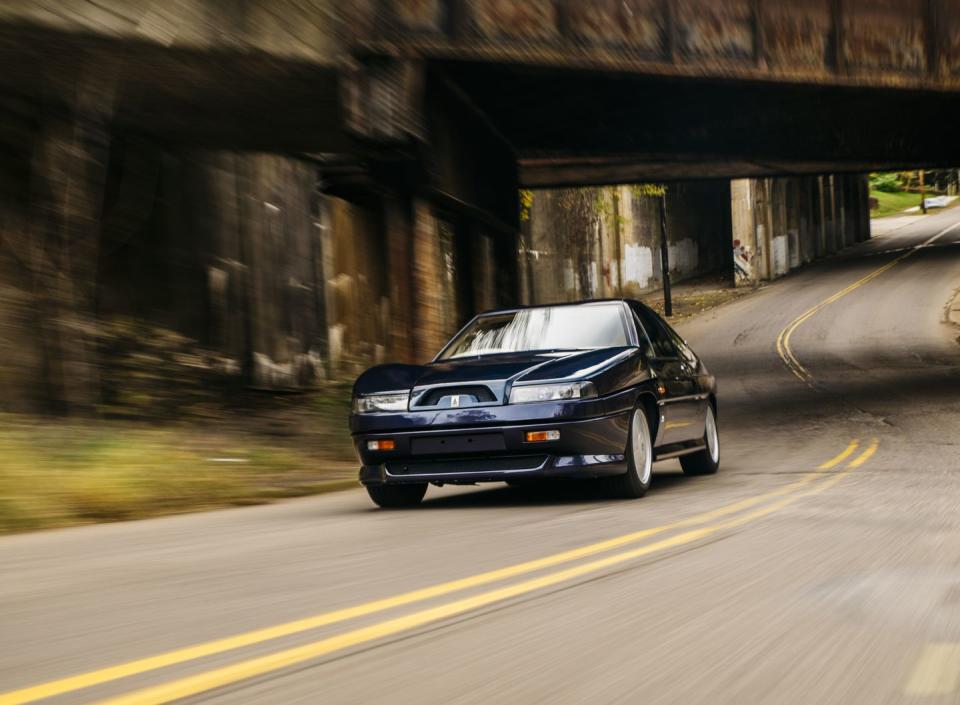
In this era, Zagato was known for three other cars: the Maserati Biturbo Spider, the Aston Martin Volante, and the Alfa Romeo SZ. All make an appearance in the Zagato Stelvio’s brochure. They are variations on a simple theme: polarizing, simplistic, and inelegant, yet charming. The designs grow on you. “When you see a car and it is a little different from all the other cars,” said Elio Zagato, “a little strange, then it is a Zagato.”
Indeed, the Autech Zagato Stelvio is one of the automotive world’s strangest creations. The car’s proportions are stubby and tall and triangular, its greenhouse rising out of its wraparound shoulders like a ziggurat. It looks like one car buried in another. The fender mirrors, a staple of Japanese motoring since time immemorial, are unmistakable and cartoonish here, flying upwards like gullwing doors. Zagato’s signature double-bubble roof makes an appearance, however subtly. The car’s miniscule grille is downturned in some sort of frowning face. And how many cars feature genuine NACA ducts on all four wheels? The answer begins and ends right here.
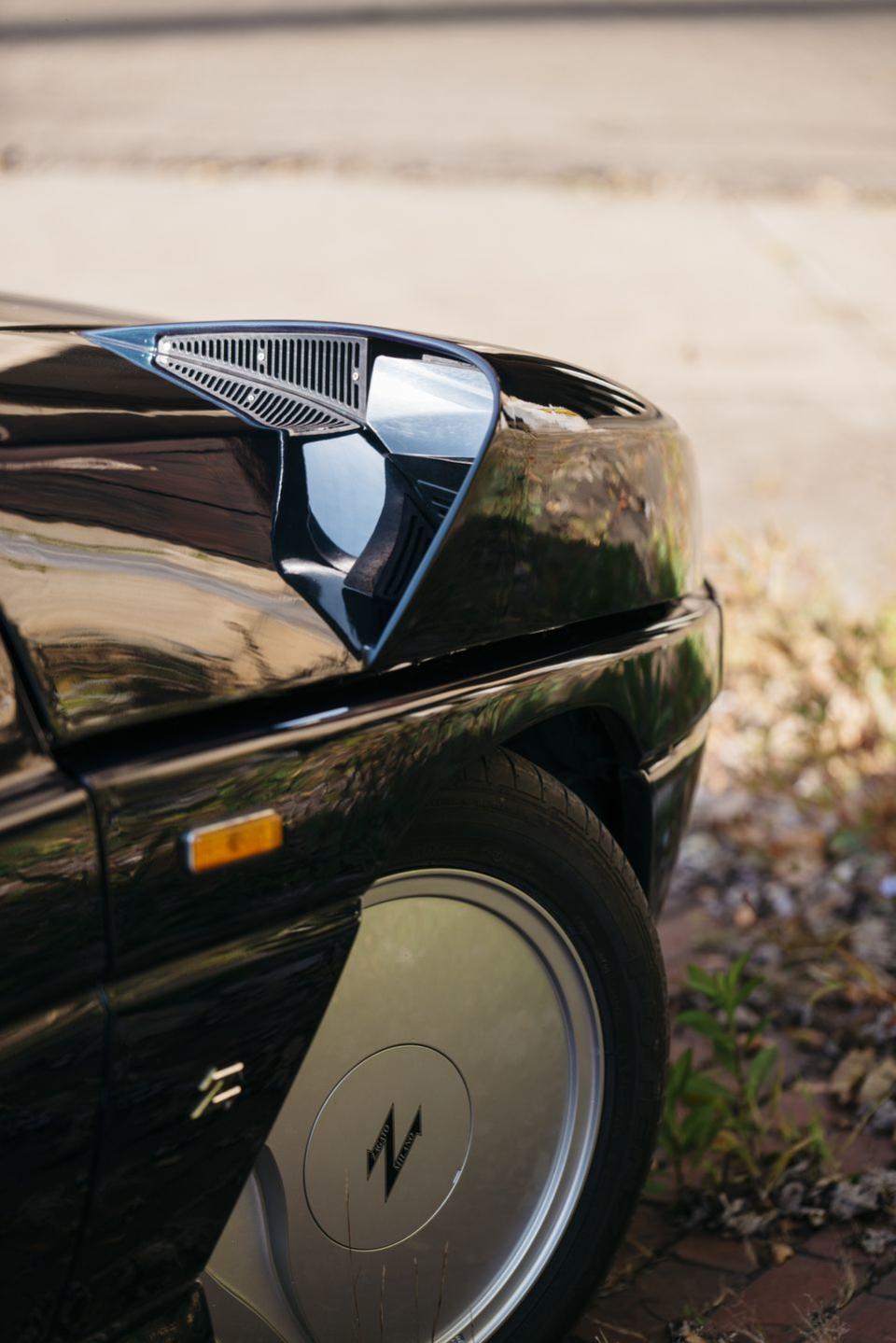
Myron Vernis may be too modest to admit this, but he is a cult figure among car collectors, the patron saint of eccentrics. His three-bay garage of obscurities, located outside Akron, Ohio is worshipped by eclectic collectors. When we met for this story, Vernis had just spent four months with his wife Kim in his homeland of Greece. While there, he regularly posted to Instagram—under the handle junkman356—glimpses of forgotten, under-championed obscurities, and shots of his somewhat tongue-in-cheek fleet. Not many people own two NSU Ro80s, a Corvette customized by George Barris, a 1935 Hoffman X8 (look it up), a one-of-two Porsche 914 converted to a pickup by Troutman and Barnes, and something called the “Leata Cabalero” (again, look it up).
Esoterica aside, his tastes usually run to Japanese cars. The rarer the better. And the Autech Zagato Stelvio finds good company among, say, the first of the Nissan Silvias, a Suzuki Alto Works RS-R, and the Honda Lady concept car built by Coggiola in 1976. Vernis has never been to Japan, but his affinity for Japanese rarities seems like a game of one-upsmanship played against himself.
In August 2019, Vernis brought Kim and his daughters, Allie and Zoe, to Monterey Car Week. He hadn’t intended to buy another car. But after a chance conversation at a local hotel, Vernis found himself wandering the grounds of the annual Bonhams auction during The Quail Motorsports Gathering. “When we were walking up to it, Kim says, what color is the car? I said, blue. And she said, that's not blue, that's green. Then we get up to it and she says, no, it's purple!”
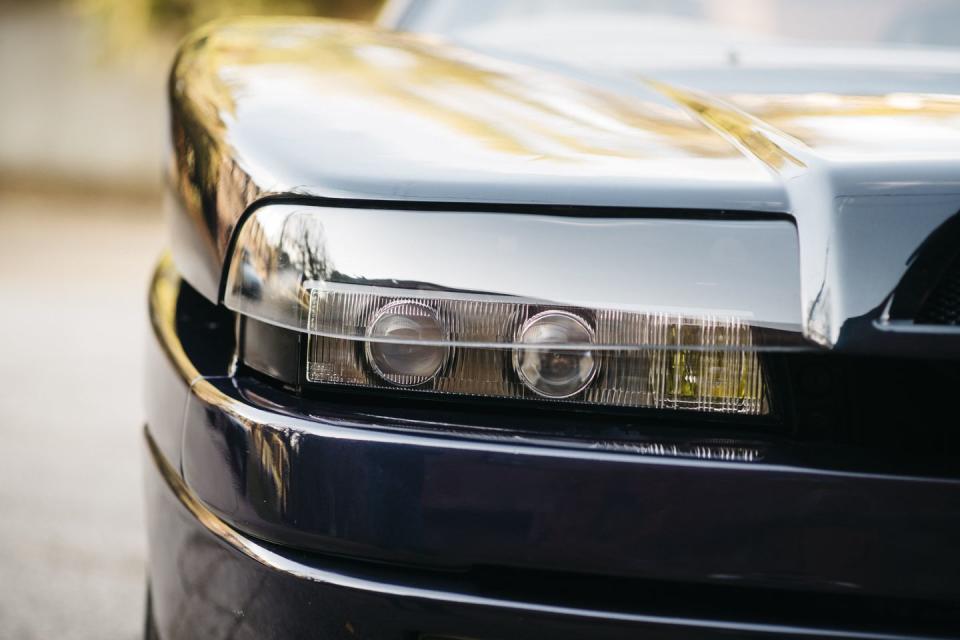
Two days later, Vernis bid for the Stelvio over the phone. “It stalled at $25,000. It was a no-reserve car. I was getting really excited. Then someone else jumped in.” A minor bidding war emerged, and in the end, Vernis came out on top. After buyers fees, the car sold for about $45,000. “It should be way more. It's a hand-built, aluminum body from Zagato. Compared to an Alfa Romeo SZ of the same period, which are double that price...not only is it the best entry-level Zagato-bodied car you can find, it's probably the most reliable.”
A week after the Stelvio arrived to Vernis’s garage, his daughters Allie and Zoe drove it to Detroit, two hours away, for Radwood. To nobody’s surprise, it won Raddest In Show.
The Vernis daughters enjoyed their two-hour jaunt to Detroit—a city where the Stelvio may as well be an alien spaceship—in supreme comfort. Fitting, as the Nissan Leopard underpins the Stelvio. The Leopard is a pseudo-luxury coupe we’d recognize as the Infiniti M30. Ergo, the comfortable ride. The car’s lightly bolstered seats are supple. The Stelvio’s on-road dynamics reflect its 3,395-pound curb weight. Steering feel from behind that black Nardi wheel is heavy, yet accurate. Visibility is good in that airy, once-commonplace way—though the fender mirrors are useless, a sentiment Vernis agreed with. Sure, there might not be a working radio—the JDM Sony double-DIN head unit can’t pick up American signals—but the car is quiet when it needs to be, until one presses down on the heavy, German-esque throttle pedal and feels the four-speed ZF automatic kick down. Then the turbocharged engine pulls like an American V8, swelling on a wave of endless torque.
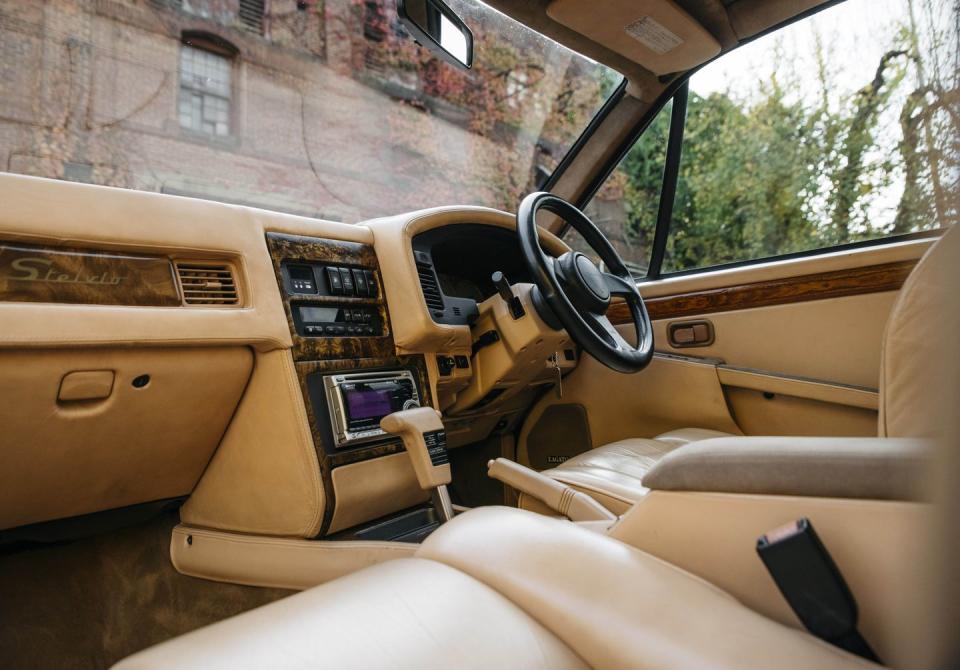
There’s nothing exotic about the Stelvio’s drivetrain, which shares its turbocharged 3.0-liter V6 engine with the early 300ZXs. Autech tuning brings power to 280 horsepower from the factory, though the Stelvio feels much quicker than that (likely binning a gentleman’s agreement among Japanese automakers, which aimed to limit performance, at the time).
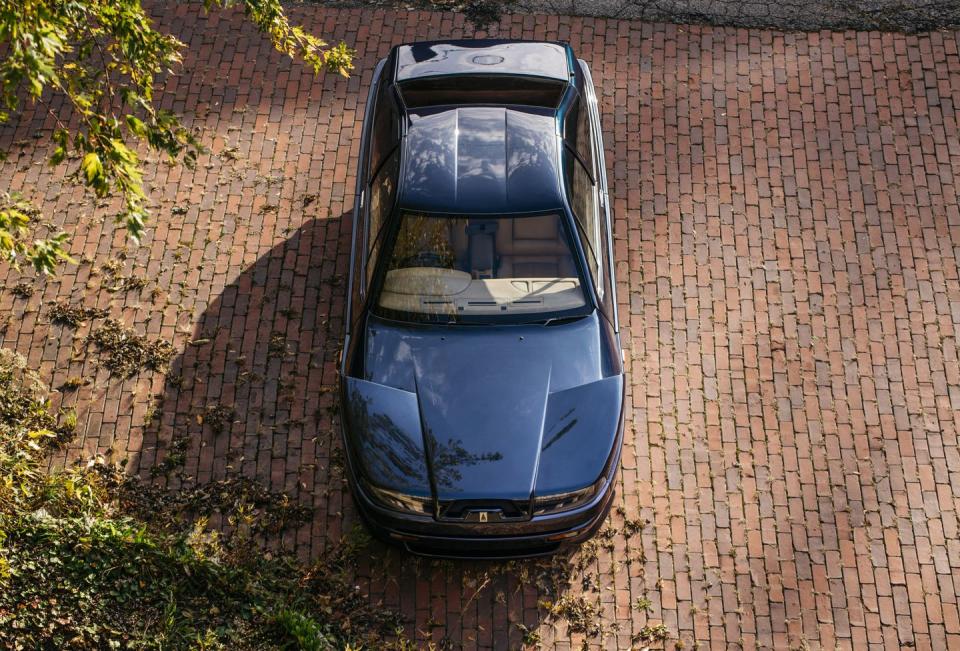
“Stelvio is just the first step, the foothills of the first mountain,” Gianni Zagato was quoted, in the car's brochure, with supreme optimism.
The partnership was supposed to last the ages. Instead, while Autech and Zagato planned to build 203 examples, the pair eked out just 88 Stelvios (or 104, depending on who you ask). By the end of 1991, the economic bubble had burst and Japan settled into its Lost Decade, which continues today—an era of layoffs, falling wages, dismal job security and economic stagnation. It’s a cruel indictment of unfettered capitalism, and the disruption it often leaves behind, for generations. Boom cycles lead to inevitable ends; this Japanese-Italian lash-up would never last. Could never last.
But the Japanese bubble found an unlikely hideout in Ohio. This Stelvio is one of just two in the United States. Knowing that level of rarity, Vernis is generous with his enthusiasm. By sharing the car, he has become more than champion of esoterica, fulfilling a role as unwitting historian on 600-mile jaunts to Indiana, that he takes whenever possible.
The wide-eyed Millenial enthusiasm the car evokes on the road, at Radwood, and on Instagram, brings the excitement of car culture back to Vernis. “Young people are doing the work. The passion’s back. The hobby’s got to go on, and the only way,” he said, is by opening the doors of his cars to the rest of us.
Most of Vernis’s Millennial, “reply guy” fanbase on Twitter, grew up in a recession too, and may always live in one. Most could never fathom paying $39.9 million for Van Gogh’s “Sunflowers,” as one Japanese buyer did, at the height of the Bubble Economy in 1987. The best we can do is to stare at the lines of something like the Stelvio and imagine an era when the world was flush with cash, and carmakers could take chances, and the future seemed limitless.

You Might Also Like

 Yahoo Autos
Yahoo Autos 